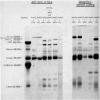Abstract
By routine screening of sera, a subject was discovered who showed a sub-total deficiency of C6 and C7. No clinical disease was associated with this deficiency which was transmitted through the subject's family as a single genetic characteristic, the C6 deficiency being associated with a silent allele at the structural locus. The propositus was found to have low quantities of an abnormal C6 which was both antigenically deficient and smaller in size than normal C6 (110,000 daltons compared with 140,000 daltons) and small quantities of apparently normal C7. It is concluded that the most likely explanation for this defect is that the subject has a structural mutation in his C6 gene which produces hyopsynthesis not only of C6 but also of the closely linked gene for C7. These findings suggest the possibility that C6 and C7 may function as a single genetic unit and that the primary transcript copied from the genome includes information for both proteins.
Full text
PDF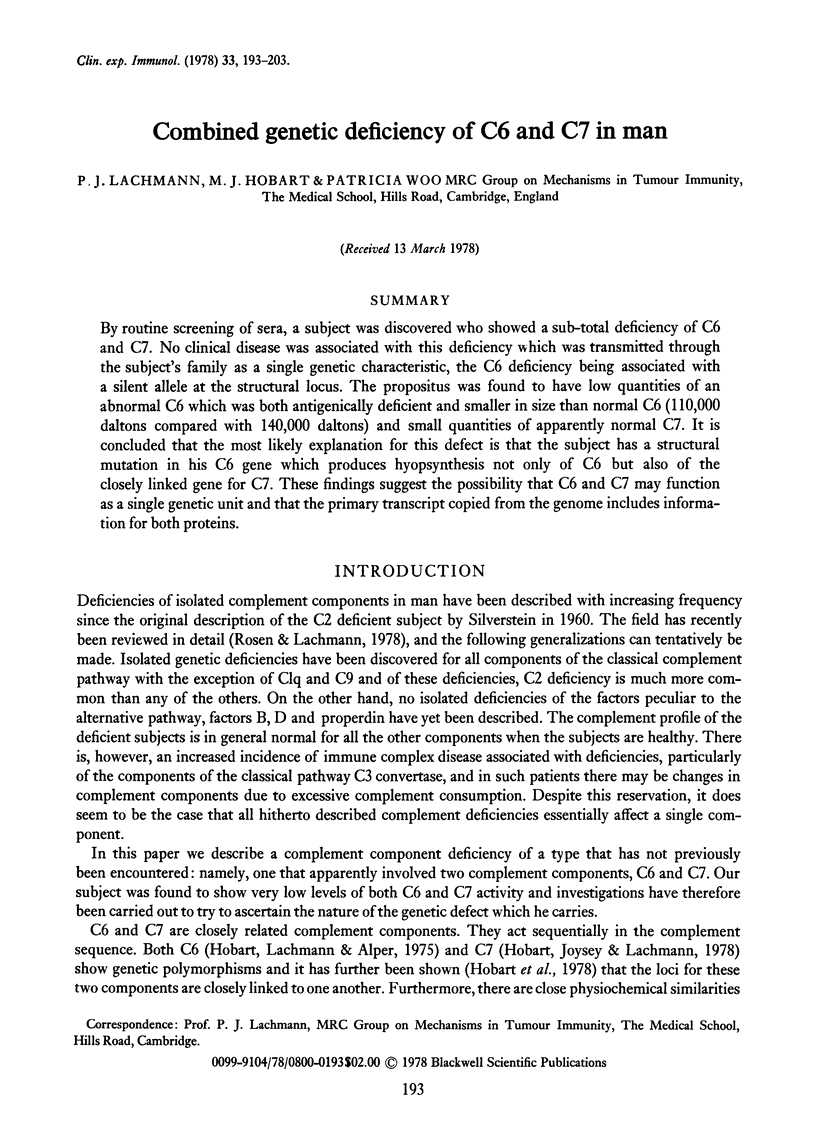
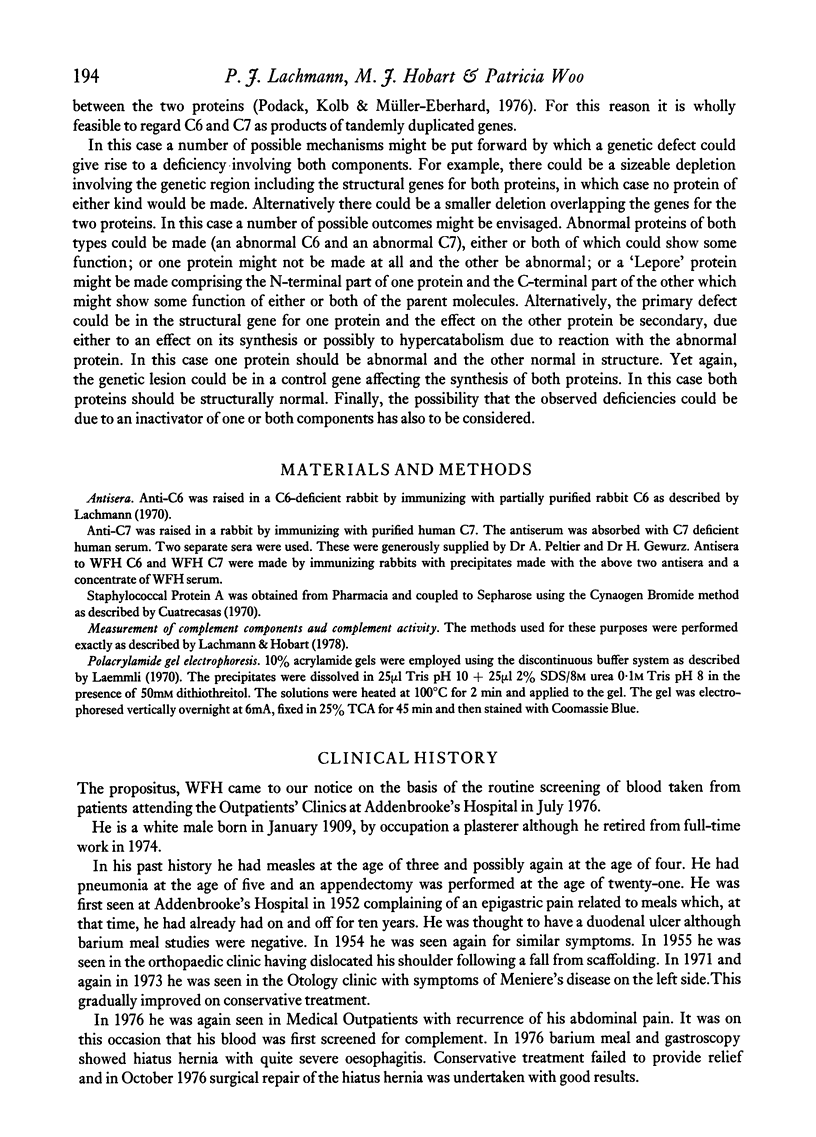
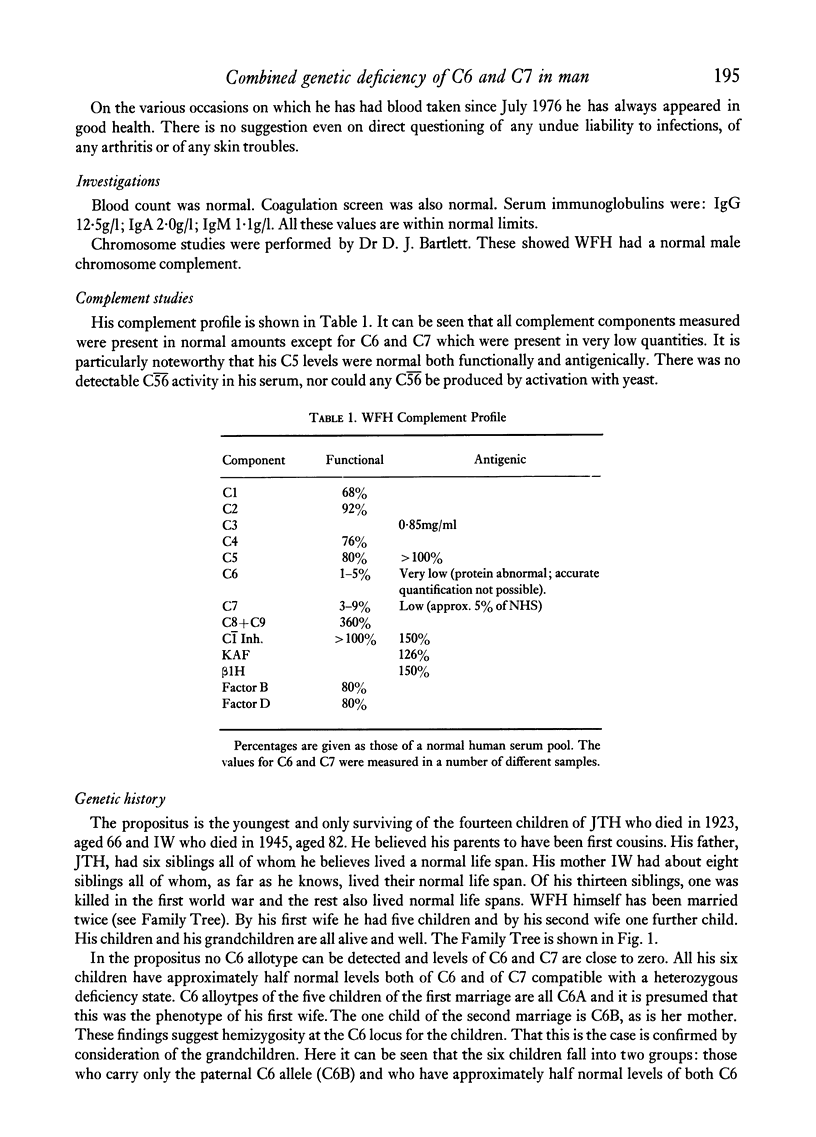
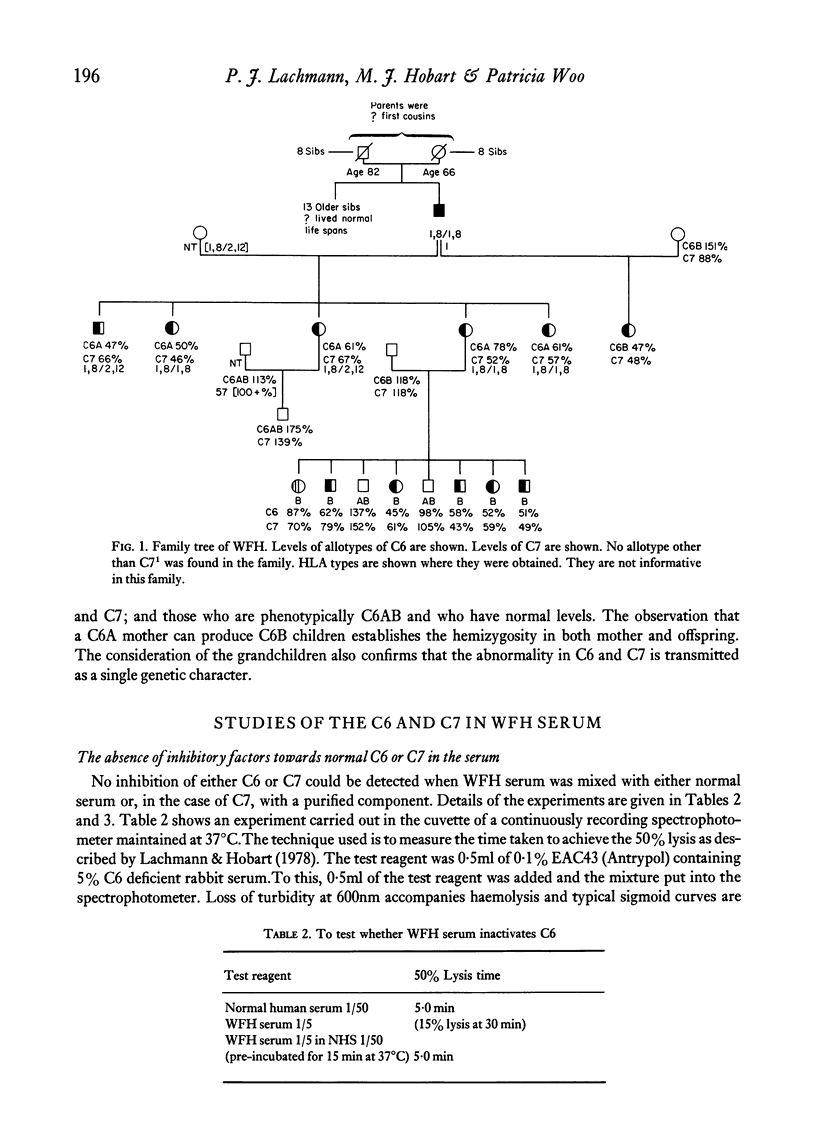
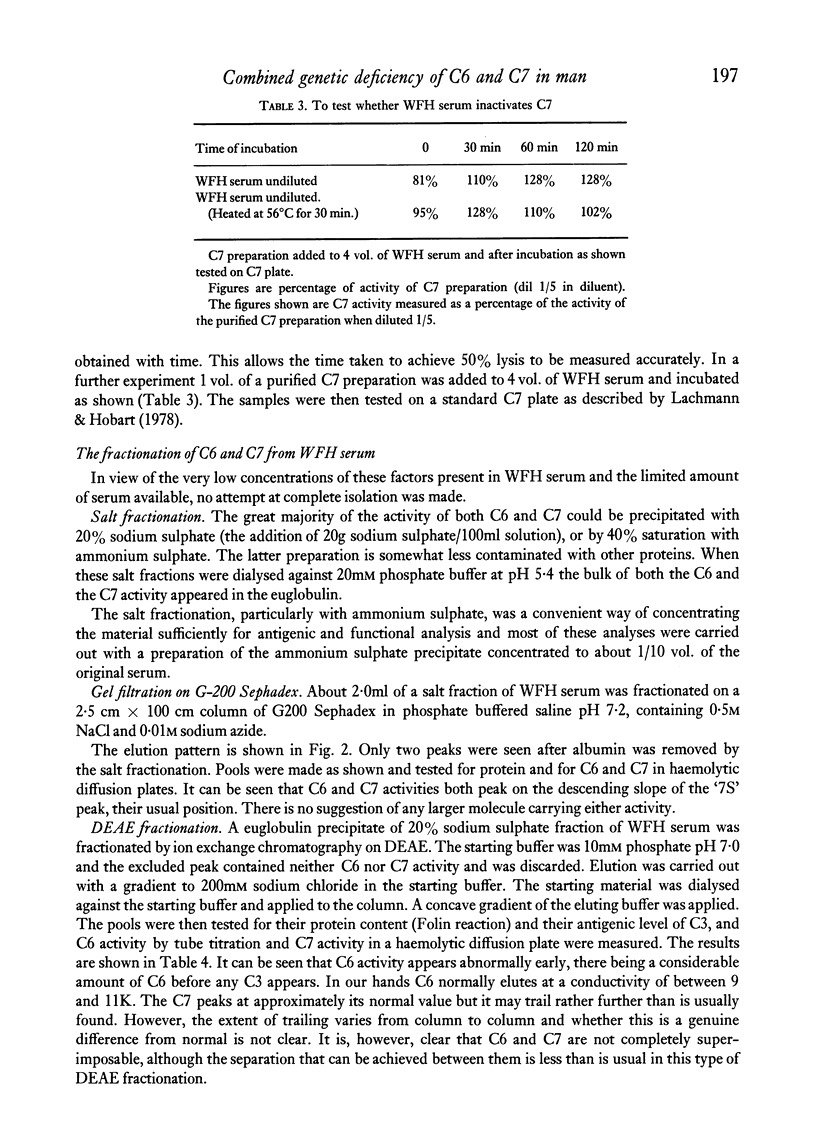
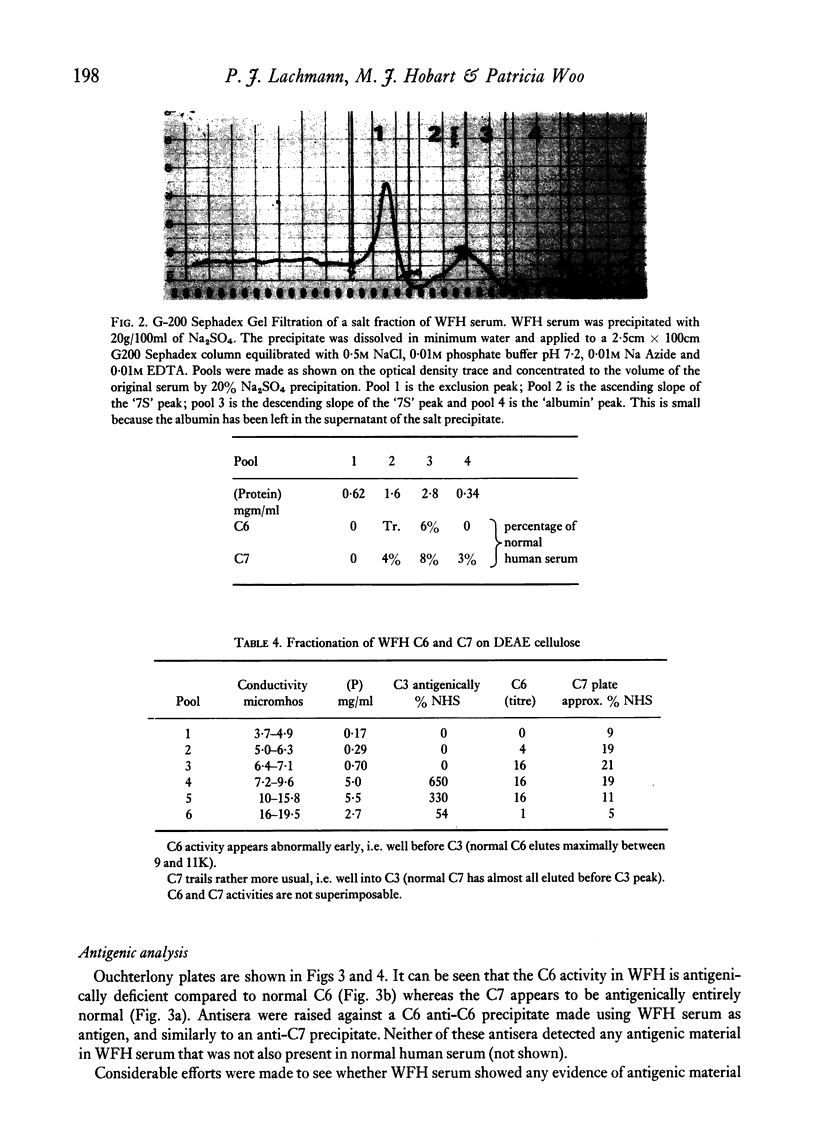
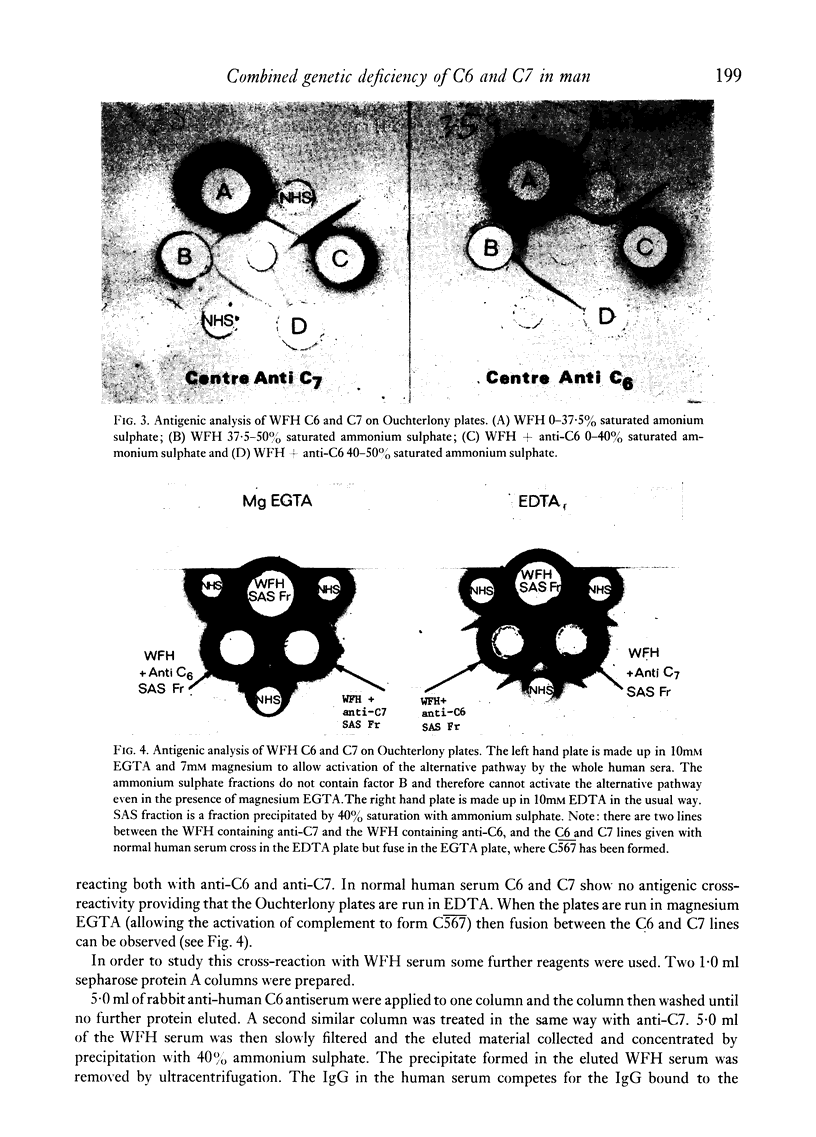
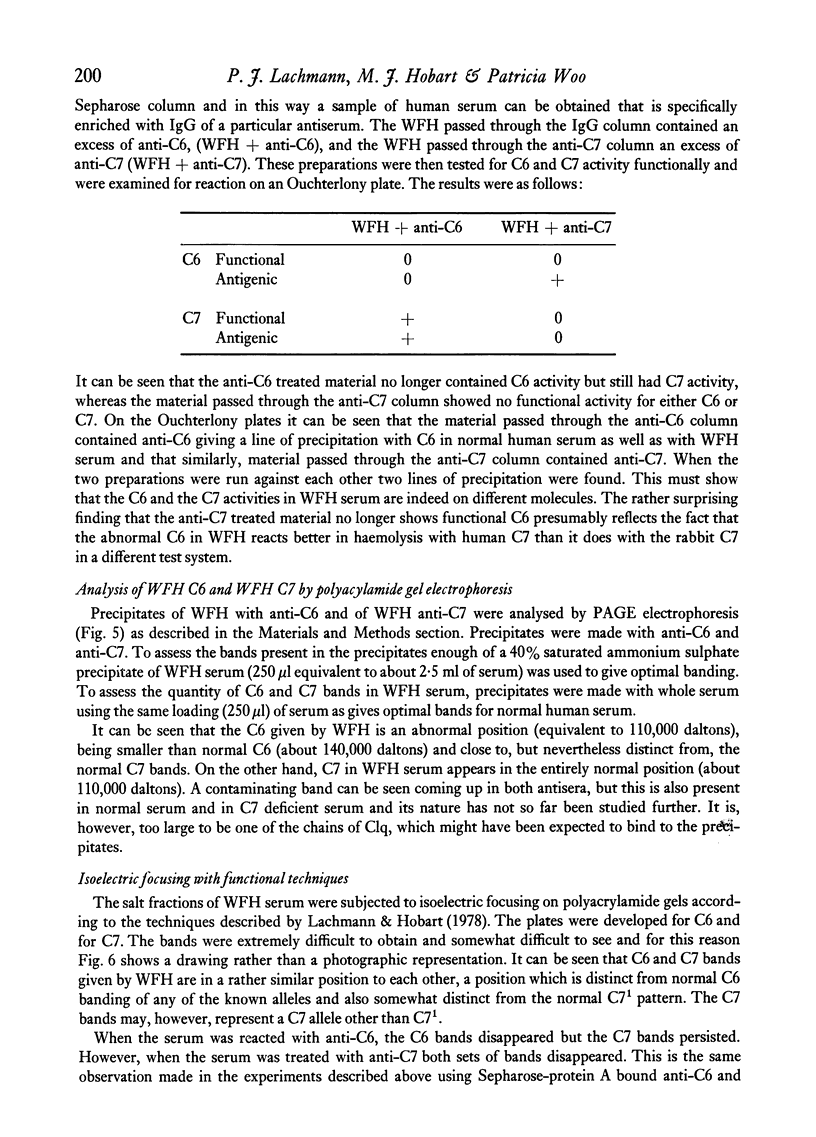
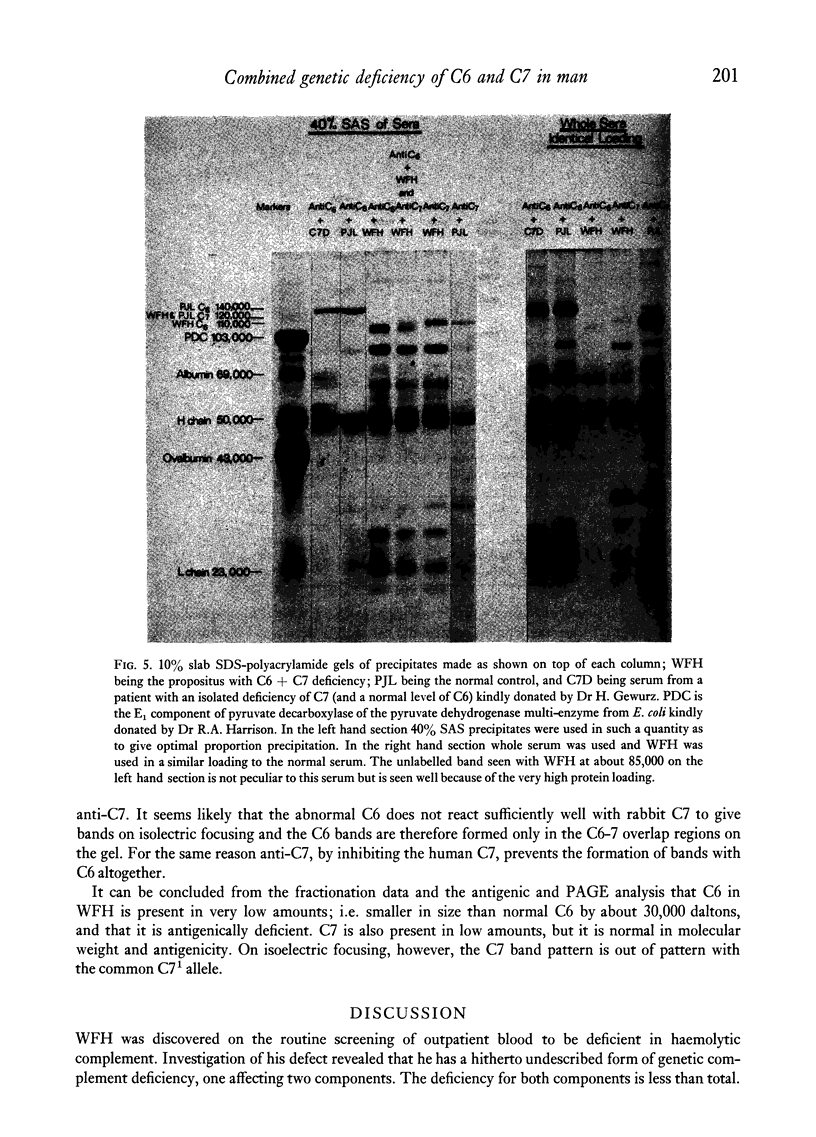
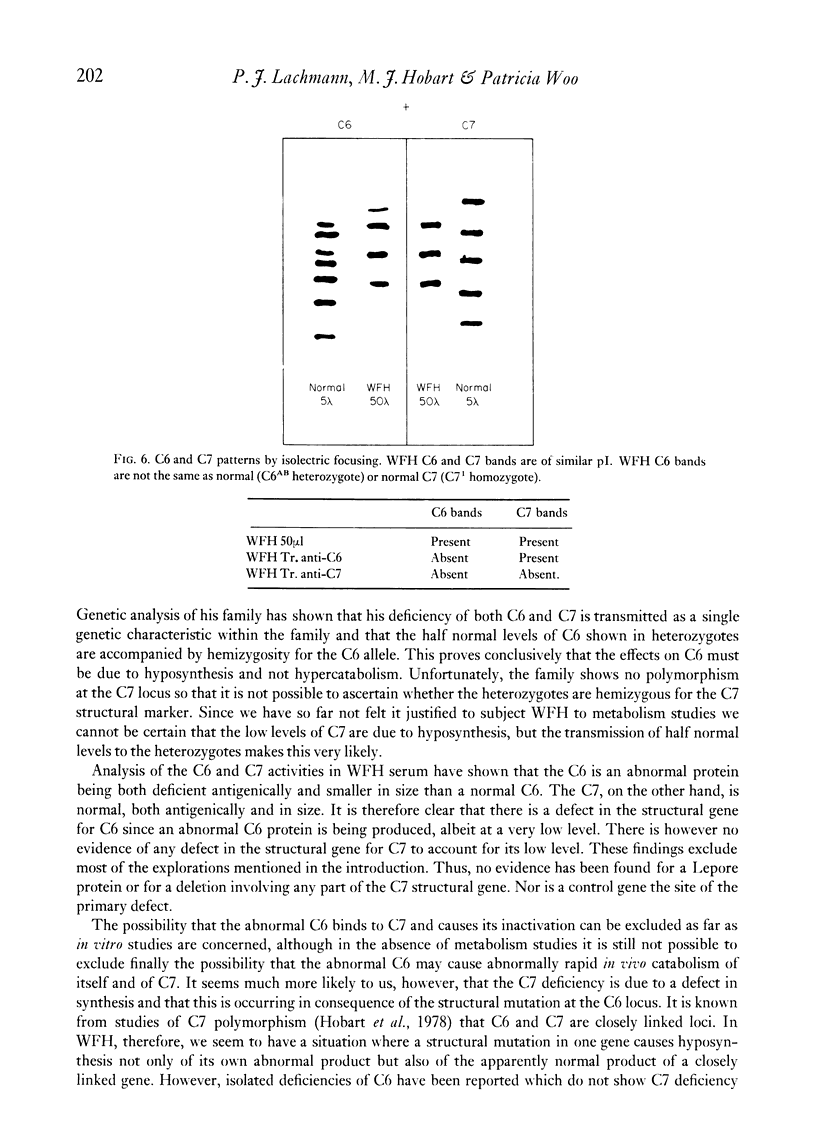
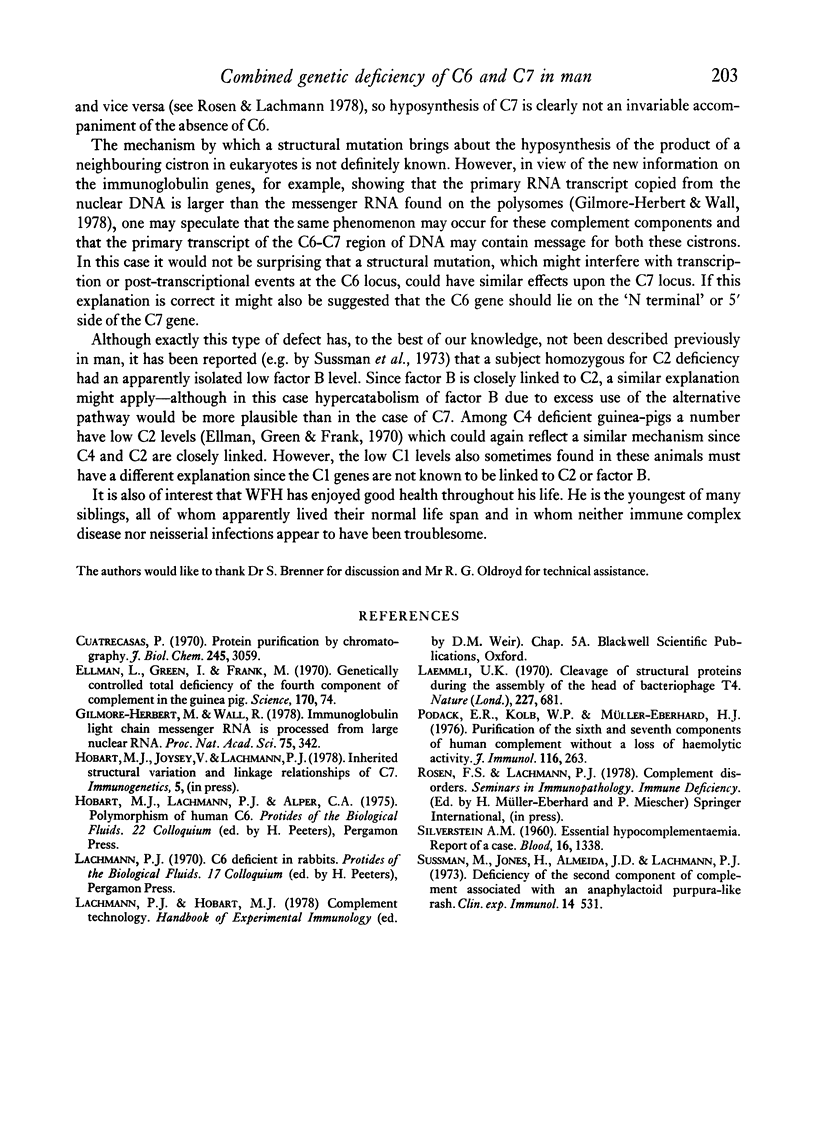
Images in this article
Selected References
These references are in PubMed. This may not be the complete list of references from this article.
- Cuatrecasas P. Protein purification by affinity chromatography. Derivatizations of agarose and polyacrylamide beads. J Biol Chem. 1970 Jun;245(12):3059–3065. [PubMed] [Google Scholar]
- Ellman L., Green I., Frank M. Genetically controlled total deficiency of the fourth component of complement in the guinea pig. Science. 1970 Oct 2;170(3953):74–75. doi: 10.1126/science.170.3953.74. [DOI] [PubMed] [Google Scholar]
- Gilmore-Hebert M., Wall R. Immunoglobulin light chain mRNA is processed from large nuclear RNA. Proc Natl Acad Sci U S A. 1978 Jan;75(1):342–345. doi: 10.1073/pnas.75.1.342. [DOI] [PMC free article] [PubMed] [Google Scholar]
- Podack E. R., Kolb W. P., Müller-Eberhard H. J. Purification of the sixth and seventh component of human complement without loss of hemolytic activity. J Immunol. 1976 Feb;116(2):263–269. [PubMed] [Google Scholar]
- SILVERSTEIN A. M. Essential hypocomplementemia: report of a case. Blood. 1960 Sep;16:1338–1341. [PubMed] [Google Scholar]
- Sussman M., Jones J. H., Almeida J. D., Lachmann P. J. Deficiency of the second component of complement associated with anaphylactoid purpura and presence of mycoplasma in the serum. Clin Exp Immunol. 1973 Aug;14(4):531–539. [PMC free article] [PubMed] [Google Scholar]






